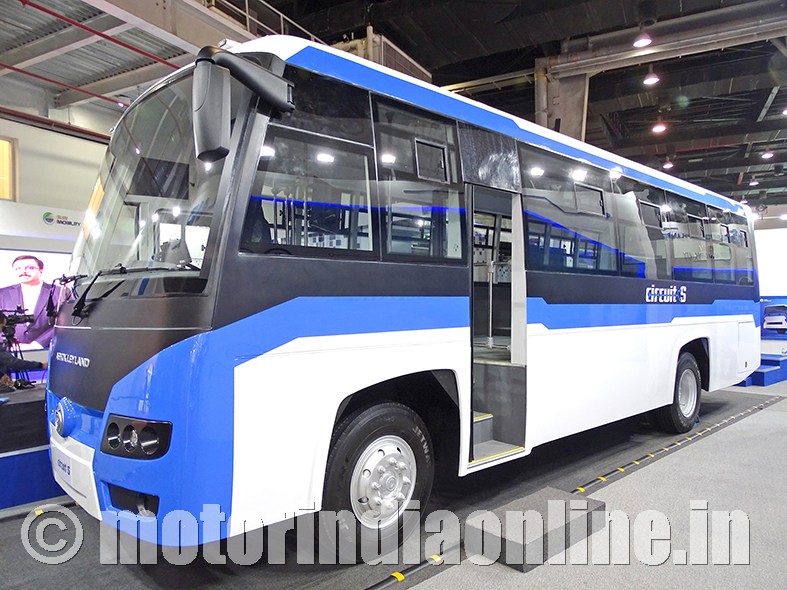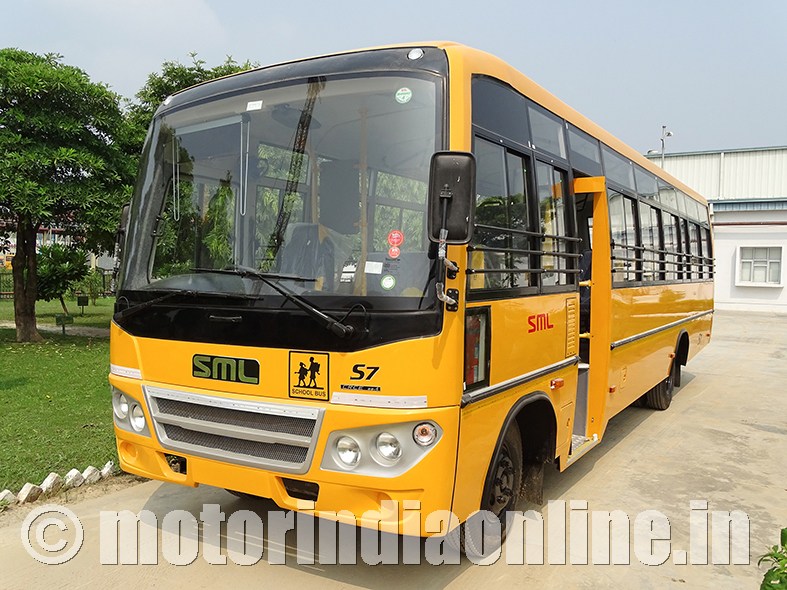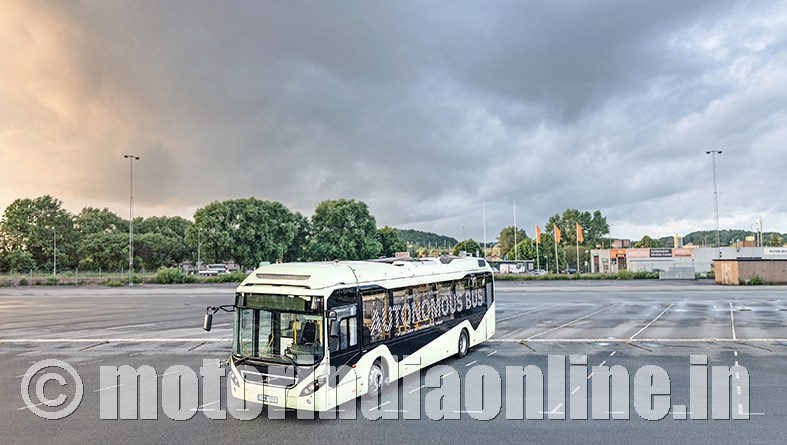Big, unthinkable changes are now invading the bus world. E-buses are here to change the landscape of public transportation in the country. But, do they promise to address our urgent needs? What are those in the first place?
The Backbay depot in the city of Mumbai is a trashy and foul-smelling place. State-owned corporation buses move in and out, belching their exhaust smoke and engine noises deviling the neighborhood. The advent of a couple of noise-less, no-fume battery electric buses sometime last year did not radically change the depot’s ambience. Nevertheless, it could be a sign of the things likely to come. No storms start abruptly, nor they take away peace forever!
Whether we get the signs right or not, electric buses are here to stay. It is true to a great extent that the battery technologies has not evolved to a level of veritable reliability and flexibility that diesel buses may offer. Nor their long-term viability and sustainability escapes bombardment with valid apprehensions. Yet, with whatever the available technology and reliability they seem to offer, policy-makers and the industry seems quite positive in tailor-making electro-mobility to meet their ends. They see electric buses as a first step towards sustainable mobility in the country.
And as a corollary, buses are emerging as a technology-demonstrator for electrification of automobiles. City buses, in particular, are creatures of habit – these mules are designed for point-to-point transit, which means their operations can manipulated to suit the range and charging limitation of EVs. They also ply in and around urban clusters where air and noise pollution out of automobiles needs urgent palliation. Buses, therefore make a great case for electrification and lead the rest of automobiles into electric propulsion.
According to the latest research report published by P&S Market Research, the Indian electric bus market is projected to reach 4,056 units by 2025, registering a CAGR of 38 percent during the forecast period. This is very much plausible, as the auto industry is recently witnessing significant investments on development of EVs. The Auto Expo 2018 clearly proved that – six pure-electric battery-powered buses from leading OEMs were unveiled, while almost all other bus makers must have already shown various other e-bus models before. They are being locally-built, making them more affordable and dependable.
The bus market, on the other hand, is also getting ready for the transition. This is mainly driven by the strict government emission norms and support in the form of subsidies and grants. There is a greater push for EVs in the country, various funding modalities are being discussed, so this gives greater confidence for SRTUs to go for e-buses. Since SRTUs are under great pressure due to changing times to overcome their structural bottlenecks and conventional thinking, electric buses seems like a heavenly relief to redefine themselves.
Ultimately, the critical dilemma between greater accessibility and environmental sustainability in mass transportation debates appear more relevant with the arrival of e-buses in the country. The penetration of bus transportation in urban mobility remains mediocre, while extending buses networks to cover all regions in our vast country and serve every spectrum of population is still largely unrealized. In this backdrop, diverting huge sum of taxpayer’s money to electrify the existing fleet appears not-so-fool-proof an idea. Let accessibility come first, sustainability can follow later. Or should it be the other way? I’m leaving it to you!
Alternative Fuels: More ‘greener’ than you think!
With Scania India terminating India’s first and only eco-friendly ethanol-run bus project in the city of Nagpur, the news of government’s plan to launch pilot projects of methanol-run buses is cheering up a bit. There is no clarity on the details of the plan, all we know is that the 20 Mercedes-Benz buses will run on methanol as technology-demonstrator in the states of Assam and Maharashtra. The unconventional fuel can reduce country’s crude oil imports by 20 percent if successful, the government claims.
The domain of alternative fuels to run buses in public transportation remains underexplored in India. Apart from CNG in select cities, buses are predominantly run on conventional diesel, resulting in higher fuel import cost and particulate emissions. The craze for battery-electric buses have overshadowed the true benefits of hybrid technologies in India. Fuels that are sourced from renewable processes offer greater scope for emission reduction in the existing ICE technology. The best example is renewable natural gas (RNG), a.k.a bio-methane or biogas. There is a need for technology-agnostic approach to sustainable mobility in the country.
School Buses and Airport Shuttle Buses: Sensible cases for Electrification
“Buses are creatures of habit”. This statement suits no bus segment more aptly than school and airport shuttle buses. School buses have a delimited routine that they hardly breach – they usually clock very limited distances every day in the morning to reach school; rest all day long there, and start back the journey in the same route. Their average odo mileage per day and resting time supports the present range-charging cycles of e-buses.
The preferred length configuration that tops in school bus category is 9-metre ‘midi’ buses – the same category in which every leading OEMs are ready with electric buses in India. Further, school buses are usually deemed to serve for longer life span than those used for public transportation, meaning, their higher upfront cost can be countervailed in the long-run in any case.
Airport shuttles, besides, are the privileged buses ever born in this world. They hardly clock few tens of kilometers even after on duty for several hours. They do have longer waiting periods, while every airliners have multiple shuttle vehicles in their ground fleet, therefore no fear of disruption of services even if a bus dies out of battery.
These two segments make a great case of electrification, to begin with in India. They offer larger scope to experiment and prove the reliability of electric buses with minimal disruption and losses, unlike public transportation. Bus makers should come up with appealing products in these segments to kick-start the e-bus movement in the country.
After electrification, brace yourselves for Connected and Autonomous Buses
The logical trajectory of the upcoming technological curve in buses beyond electrification is nothing but connected and autonomous buses. These three disruptive trends are revolutionizing the entire automotive ecosystem, they wouldn’t spare buses as well. Bringing every buses under the grid is not the only idea here, but a sheer level of artificial intelligence will be imparted as well.
Buses may interact among themselves or with other vehicles, share key data, and coordinate on key functional areas of autonomous driving, road safety, vehicle management, entertainment for commuters, and ecosystem (like roads, street lamps, charging stations, etc.) integration.
Volvo Buses recently demonstrated its autonomous bus in Gothenburg, Sweden. Based on Volvo’s commercially produced electric city bus, the prototype has been modified for autonomous operation, in pursuit of safer and more comfortable travel, as well as more efficient handling of vehicles in the depot. The bus is programmed to drive gently and manage start-stop operations, resulting in energy-efficient, environmentally-friendly and economical operations. The concept of ‘bus platooning’ is also envisioned through this technology.


